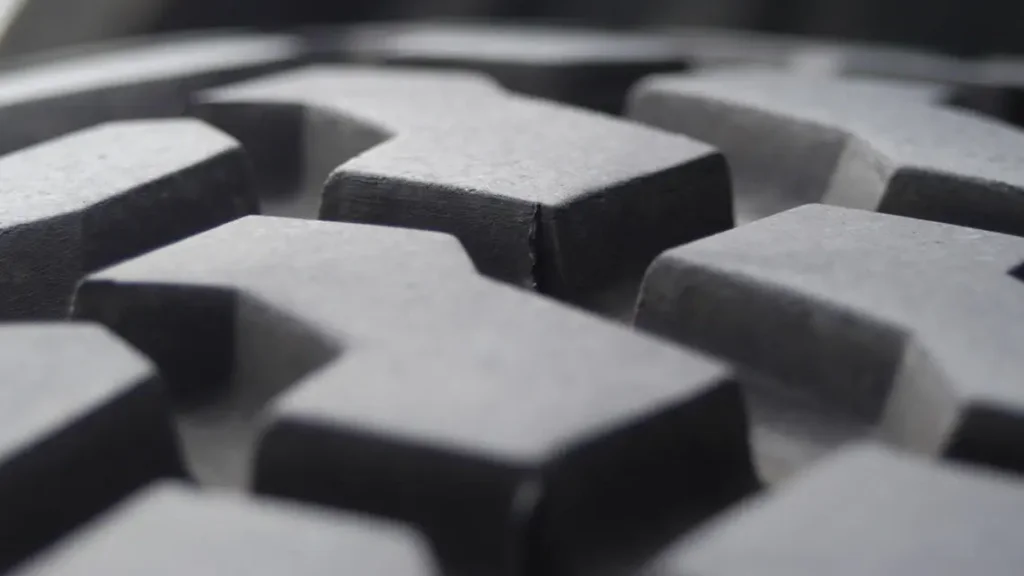Considering the impact of tyres, whether in-use or used, and tightening regulations, large tyre companies have been taking serious measures from selecting raw materials to production process to make tyres eco-friendly. Eleven leading tyres companies that represent approximately 65 per cent of the world’s tyre manufacturing capacity formed the Tire Industry Project (TIP), which operates under the umbrella of the World Business Council for Sustainable Development (WBCSD) to identify and address potential human health and environmental impacts associated with the lifecycle of tyres, covering end-of-life tyres (ELT), environmental key performance indicators (KPIs), Product Category Rules (PCR), tyre and road wear particles (TRWP), nanomaterials, tyre granulates, and sustainable natural rubber. In an interview with Tyre Asia, Anne-Cecile Remont, TIP Director at WBCSD spoke efforts of the organisation on end-of-life tyres, impacts of tyre and road wear particles, rubber sustainability, product category rules and other issues.
According to TIP findings, TRWP present no significant risk to humans and the environment. How did TIP reach this conclusion?
Tyre and road wear particles (TRWP) are tiny debris produced when tyres are used on the road; they are not simply rubber pieces from the tyre, but rather an agglomeration of material from the tyre along with material from the road. The key takeaway from TIP research to-date has been that the presence of TRWP does not significantly cause risk to humans or the environment. This conclusion was reached following a series of hazard and exposure assessments for TRWP.
Hazard assessments for aquatic toxicity were conducted in fresh water environments, whilst inhalation research was used for mammalian toxicity. The absence of observed adverse effects on test organisms from seven species led to the conclusion that TRWP present low toxicity to both water and sediment dwelling species. TRWP did not produce any observable adverse effects at any concentration tested in mammalian studies.
For exposure assessment, TIP developed a marker to identify and measure TRWP in the environment, focusing on particles of representative sizes PM10 and PM2.5. TRWP were detected in soil, sediment, and air.
The risk conclusions for both human health and the ecological environment were favorable. The mammalian hazard and exposure studies drew the conclusion that there is unlikely to be adverse health risk related to TRWP. Similarly, exposure to airborne TRWP is at concentrations lower than any concentration expected to cause harm to humans. For the environment, based on the aquatic hazard and exposure studies, TRWP is not expected to have adverse effects on ecological environments.
What is TIP doing to promote eco-friendly tyre production?
TIP member companies work independently to improve the efficiency of their respective operations and reduce their environmental impact. Recognizing the importance of standards for measuring and reporting on this, TIP initiated the design, implementation, and reporting on a set of environmental Key Performance Indicators (KPIs) specific to the tyre industry.
The KPIs help quantify and evaluate the environmental performance of tyre production in areas including carbon emissions, energy use, water intake, and site certification under ISO 14001 (on effective environmental management systems (EMS)).
In practice, TIP member companies collect environmental KPI data for each of their manufacturing facilities. Through consolidation of this data, it is possible to track the overall progress of TIP member companies and provide an aggregated data set, against which companies can track their own performance. In 2017, TIP published a report covering the 2009-2015 period and will publish annual reports thereafter.
The 2009-2015 report revealed encouraging trends; namely, that carbon emissions and energy consumption were relatively stable over the five-year period, and that water intake was reduced by 24 percent – all whilst tyre production levels and product quality increased.
Is TIP working on the topic of nano materials?
Nano-structured materials – in aggregated forms – are used in tyre manufacturing. They can help increase fuel efficiency and tyre robustness, thereby decreasing greenhouse gas emissions. Nanomaterials have already helped improve the environmental performance of tyres, and their application in tyre manufacturing has the potential for further benefits for society and the environment.
TIP contributed to an Organization for Economic Co-operation and Development (OECD) evaluation report on the development and use of new nanomaterials in tyres. Published in July 2014, ‘Nanotechnology and Tyres: Greening Industry and Transport’ gives recommendations for safe development for human health and the environment for the production stage of the tyre.
The publication of an OECD report on this topic confirms societal interest in the development and use of nanomaterials – reaffirming the value of TIP’s efforts to address stakeholder questions on the use of nanomaterials in tyre production, and to develop best practices for nanomaterial development and use. Indeed, TIP continues to support sustainable innovation and use of nanomaterials by working with the OECD to develop guidelines for safe use of nanomaterials throughout the tyre lifecycle.
What is TIP’s involvement in end-of-Life Tyre (ELT) management?
With the goal of resource conservation, TIP promotes good practices for the management of ELTs, showing that ELTs can be valuable secondary materials or fuels for other industries.
In 2010, TIP published an ELT manual to share good practices and describe the framework of essential components for an effective ELT management system. The manual was compiled to raise awareness of the potential for (and guidance on how to achieve) positive ELT management around the world; TIP considers it a priority to equip manufacturers, policymakers, retailers, and other key stakeholders with the tools they need to better implement ELT management systems. In fact, one of the key conclusions of the report underlines the crucial role that governments play in supporting the legal frameworks necessary for the development of successful ELT markets.
In January of this year, TIP published the report ‘ELT Management, a Global State of Knowledge on collection rates, recovery routes, and management methods’. The report disclosed the findings of research conducted to determine the status of ELT management systems for a selection of 51 countries, which account for 89% of vehicles in the world.
The report estimated that 25,676 kilotons of ELTs were generated each year, with approximately 17,158 kilotons of ELT recovered annually; excluding civil engineering and backfilling, this equates to an approximate global recovery rate of 67 percent.
On the uses of ELT, the report confirmed that ELT are mostly used in material recovery, energy recovery, civil engineering, and backfilling. In developed regions, 33 percent of ELT are used in the production of tyre derived materials, 31 percent for tyre derived fuels, and 23 percent for reclaimed rubber.
TIP’s work on ELT continues; for example, TIP has identified the most promising recovery routes and is sharing that knowledge with stakeholders so that they can focus on the most effective methods in the future.
What is TIP’s involvement in sustainable natural rubber?
With proximity to both natural rubber producers and rubber end users, TIP sees the tyre industry as both a critical stakeholder in natural rubber sustainability and as a key leader. To that end, TIP is committed to evaluating sustainable best practices and identifying appropriate governance structures to form a sustainable natural rubber platform.
Through the establishment of a sustainable natural rubber platform, TIP envisions a holistic, value-chain approach that considers the important issues impacting the natural rubber supply chain, including deforestation, human rights, and land rights.
TIP acknowledges the complexity of the natural rubber supply chain with millions of small farmers and recognizes the need to work with other value chain members towards this goal. Consequently, TIP is engaging stakeholders along the natural rubber value chain and in civil society, and those stakeholders have been receptive to TIP’s efforts. TIP intends to continue discussions with stakeholders, believing that a unified global solution with interested stakeholders as the most effective and efficient way to move toward a successful platform.
Do you think TIP’s role will expand in future? if yes, then which areas would it focus?
Over the last 13 years, responding to innovation in the sector, new knowledge, and the interests of society, TIP member companies have worked together to initiate and support research to advance societal understanding of the potential lifecycle impacts of tyres.
Today, TIP follows a comprehensive range of tyre-related topics of relevance to human health and the environment and will continue to work with and listen to stakeholders to adapt its work program to address the most important health and environmental topics relevant to the lifecycle of tyres.
What are Product Category Rules (PCRs) and why has TIP developed a PCR for tyres?
A PCR is an agreed-to, industry-specific guideline used to determine the environmental impacts of a product. A PCR provides industry a standardized way to develop Environmental Product Declarations (EPDs), which are an internationally recognized way to verify the environmental impacts of a product – a so-called environmental label. For tyre manufacturers to publish an EPD for one of their products, the product must apply to the relevant PCRs.
TIP favors a proactive approach, and its contribution to develop a first-of-its-kind, globally applicable environmental standard for tyres over their entyre lifecycle is an example of this.
Using a lifecycle assessment (LCA) approach, tyre PCRs break down a tyre’s lifecycle through the careful construction of four key phases: production, mounting, use, and end-of-life. The PCR allows the industry to better understand the environmental impacts of tyres over their lifecycle, how to reduce those impacts, and how to communicate this information in a consistent manner.
It is interesting to note that because tyres do not directly consume energy during use, earlier PCRs with relevance to tyres did not adequately account for tyre contribution to energy consumption during the use stage. TIP PCR sought to specifically address this by including means to determine the contribution of tyres to the amount of energy consumed by a vehicle. This was achieved by considering variables related to both tyre and vehicle contribution to energy consumption, including a tyre’s rolling resistance, mass and dimension, as well as relevant load and vehicle efficiency parameters. Importantly, the new PCR includes estimation of tyre energy consumption under different driving scenarios, and therefore provides an important means of comparison of the environmental impacts of different tyres.
Ultimately, PCRs for tyres should help reassure stakeholders that tyres undergo a rigorous assessment of their potential environmental impact. Similarly, the standardized approach of the PCR means EPD methodology is consistent and easy-to-understand, and customers are provided means for improved comparison of the environmental credentials of tyres. For example, the PCR details more than 25 categories of environmental indicators, including potential impacts on global warming, ozone depletion, generation of particulate matter, and use of freshwater resources.
This article was originally published by Tyre Asia
Outline
Related
Content

Latham & Watkins launches inaugural environmental sustainability report
17 June, 2021

TIP supports OECD microplastics report focused on textiles and tires
29 October, 2021

To address inequality, companies should put human rights at the core of how they do business
23 June, 2022
